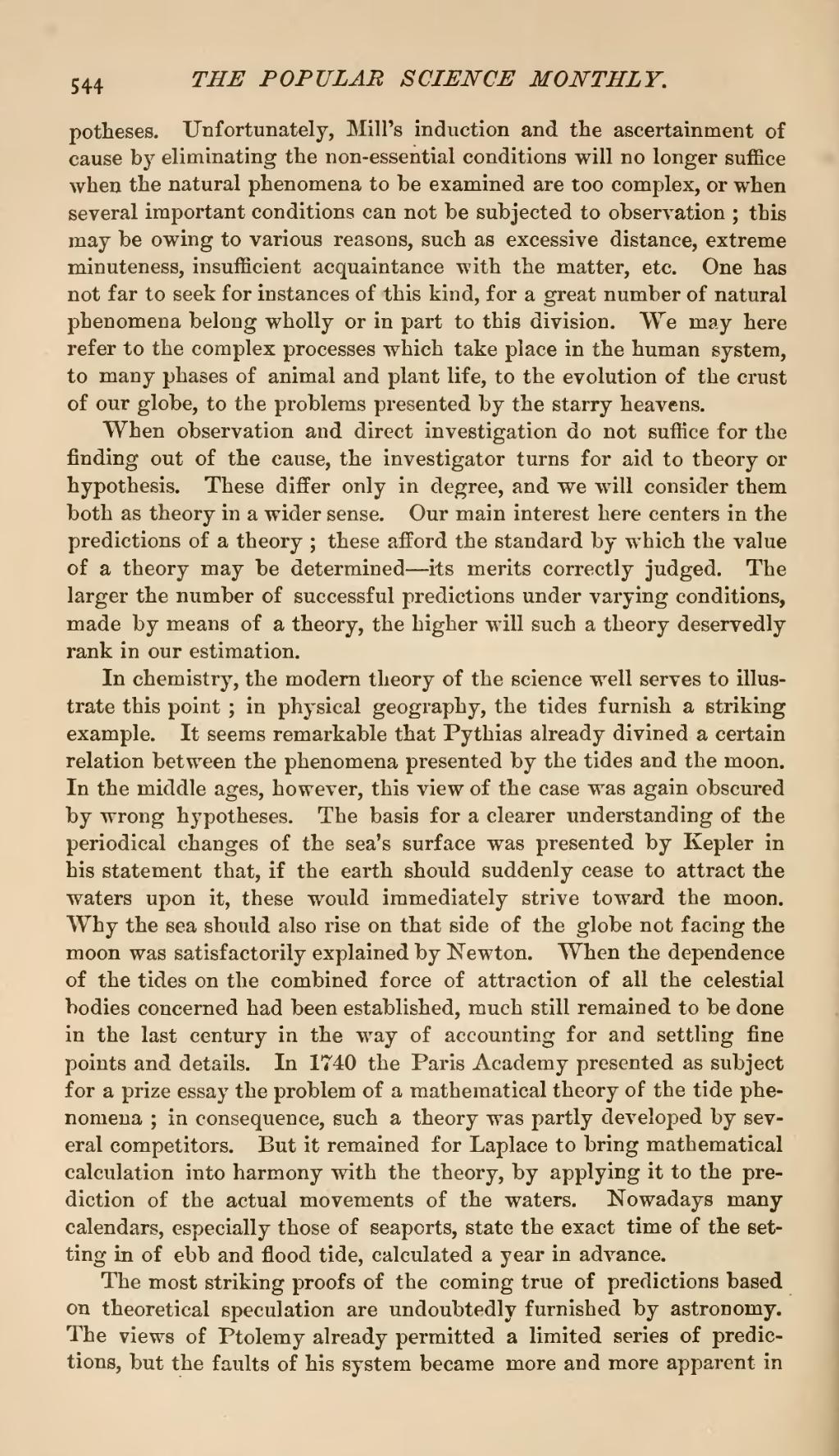potheses. Unfortunately, Mill's induction and the ascertainment of cause by eliminating the non-essential conditions will no longer suffice when the natural phenomena to be examined are too complex, or when several important conditions can not be subjected to observation; this may be owing to various reasons, such as excessive distance, extreme minuteness, insufficient acquaintance with the matter, etc. One has not far to seek for instances of this kind, for a great number of natural phenomena belong wholly or in part to this division. We may here refer to the complex processes which take place in the human system, to many phases of animal and plant life, to the evolution of the crust of our globe, to the problems presented by the starry heavens.
When observation and direct investigation do not suffice for the finding out of the cause, the investigator turns for aid to theory or hypothesis. These differ only in degree, and we will consider them both as theory in a wider sense. Our main interest here centers in the predictions of a theory; these afford the standard by which the value of a theory may be determined—its merits correctly judged. The larger the number of successful predictions under varying conditions, made by means of a theory, the higher will such a theory deservedly rank in our estimation.
In chemistry, the modern theory of the science well serves to illustrate this point; in physical geography, the tides furnish a striking example. It seems remarkable that Pythias already divined a certain relation between the phenomena presented by the tides and the moon. In the middle ages, however, this view of the case was again obscured by wrong hypotheses. The basis for a clearer understanding of the periodical changes of the sea's surface was presented by Kepler in his statement that, if the earth should suddenly cease to attract the waters upon it, these would immediately strive toward the moon. Why the sea should also rise on that side of the globe not facing the moon was satisfactorily explained by Newton. When the dependence of the tides on the combined force of attraction of all the celestial bodies concerned had been established, much still remained to be done in the last century in the way of accounting for and settling fine points and details. In 1740 the Paris Academy presented as subject for a prize essay the problem of a mathematical theory of the tide phenomena; in consequence, such a theory was partly developed by several competitors. But it remained for Laplace to bring mathematical calculation into harmony with the theory, by applying it to the prediction of the actual movements of the waters. Nowadays many calendars, especially those of seaports, state the exact time of the setting in of ebb and flood tide, calculated a year in advance.
The most striking proofs of the coming true of predictions based on theoretical speculation are undoubtedly furnished by astronomy. The views of Ptolemy already permitted a limited series of predictions, but the faults of his system became more and more apparent in

